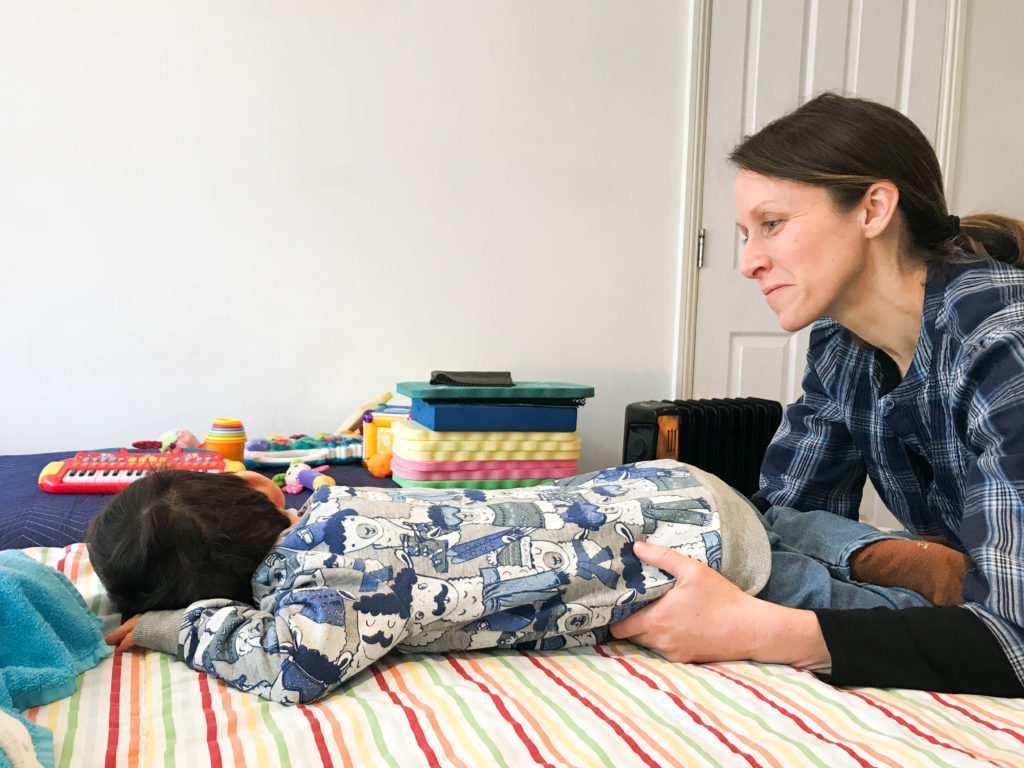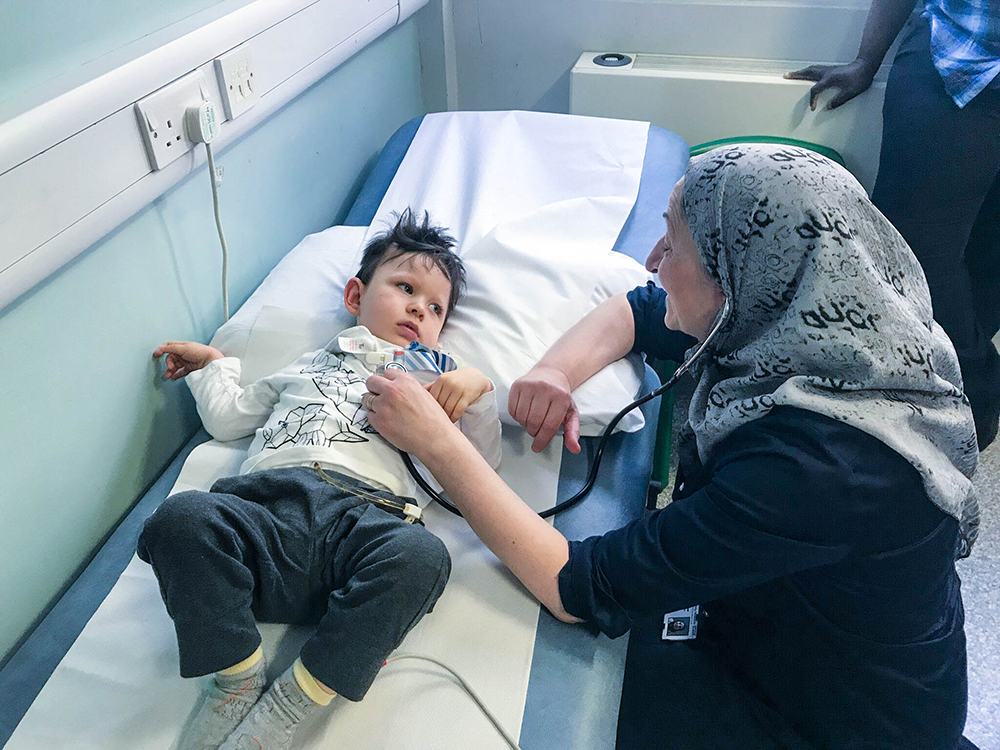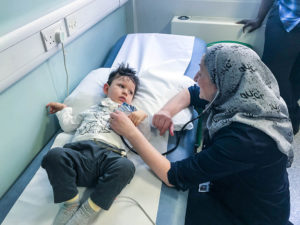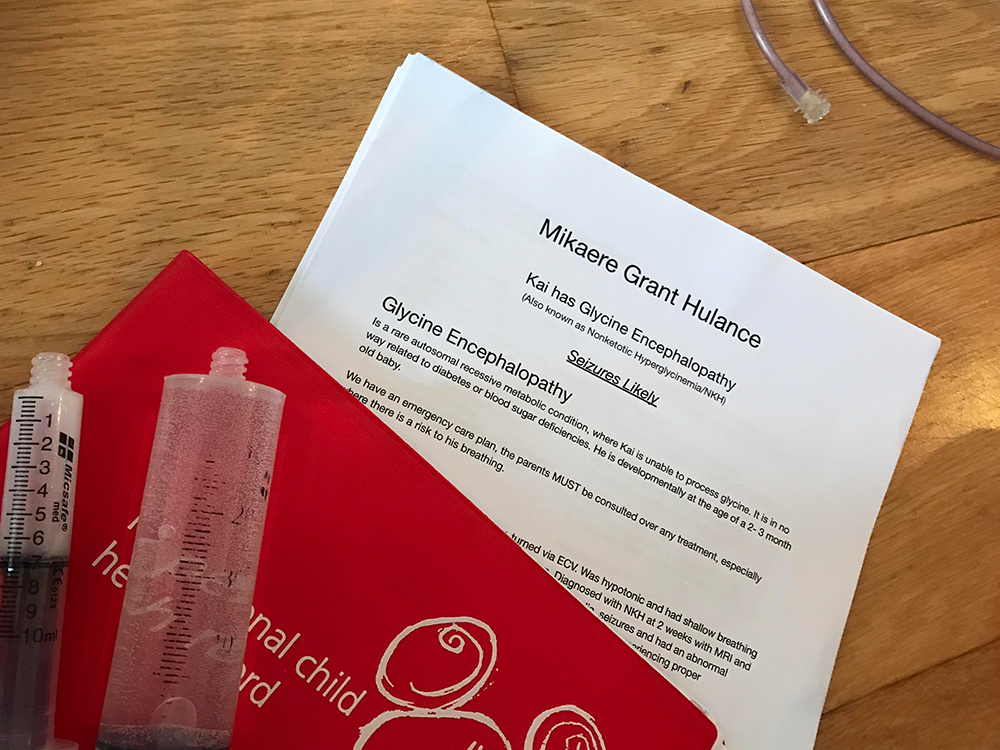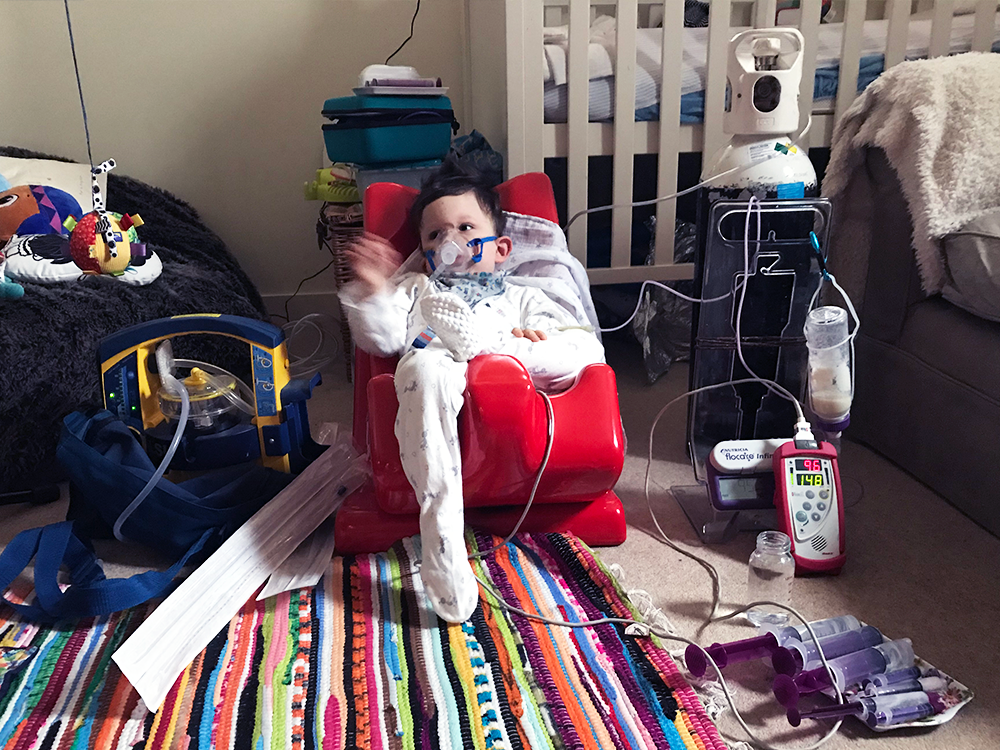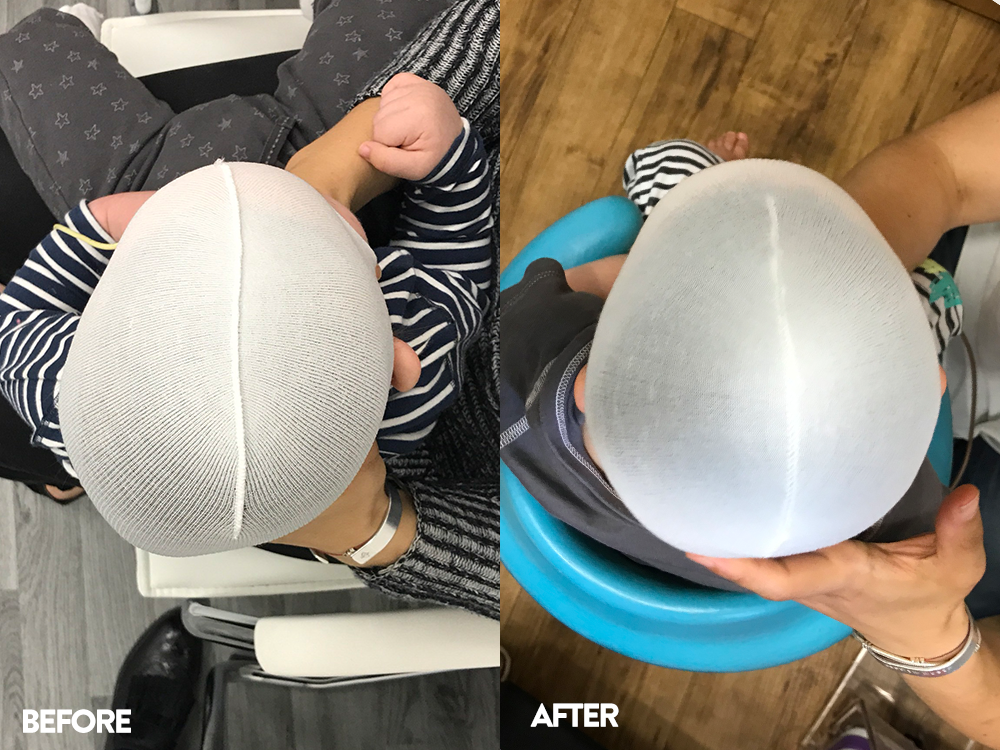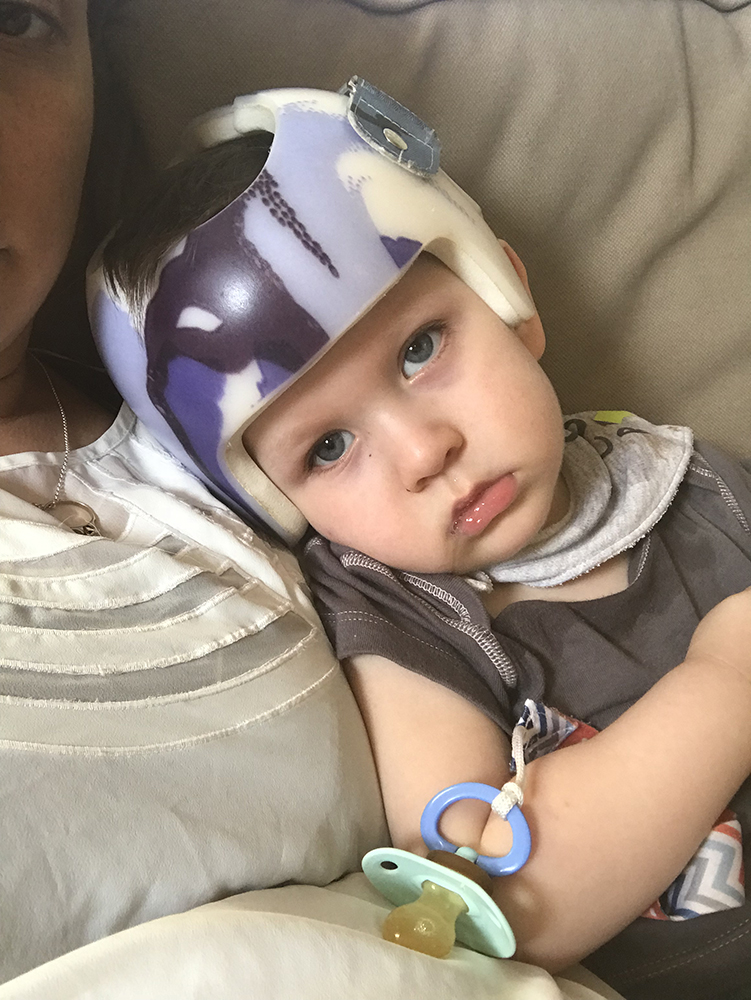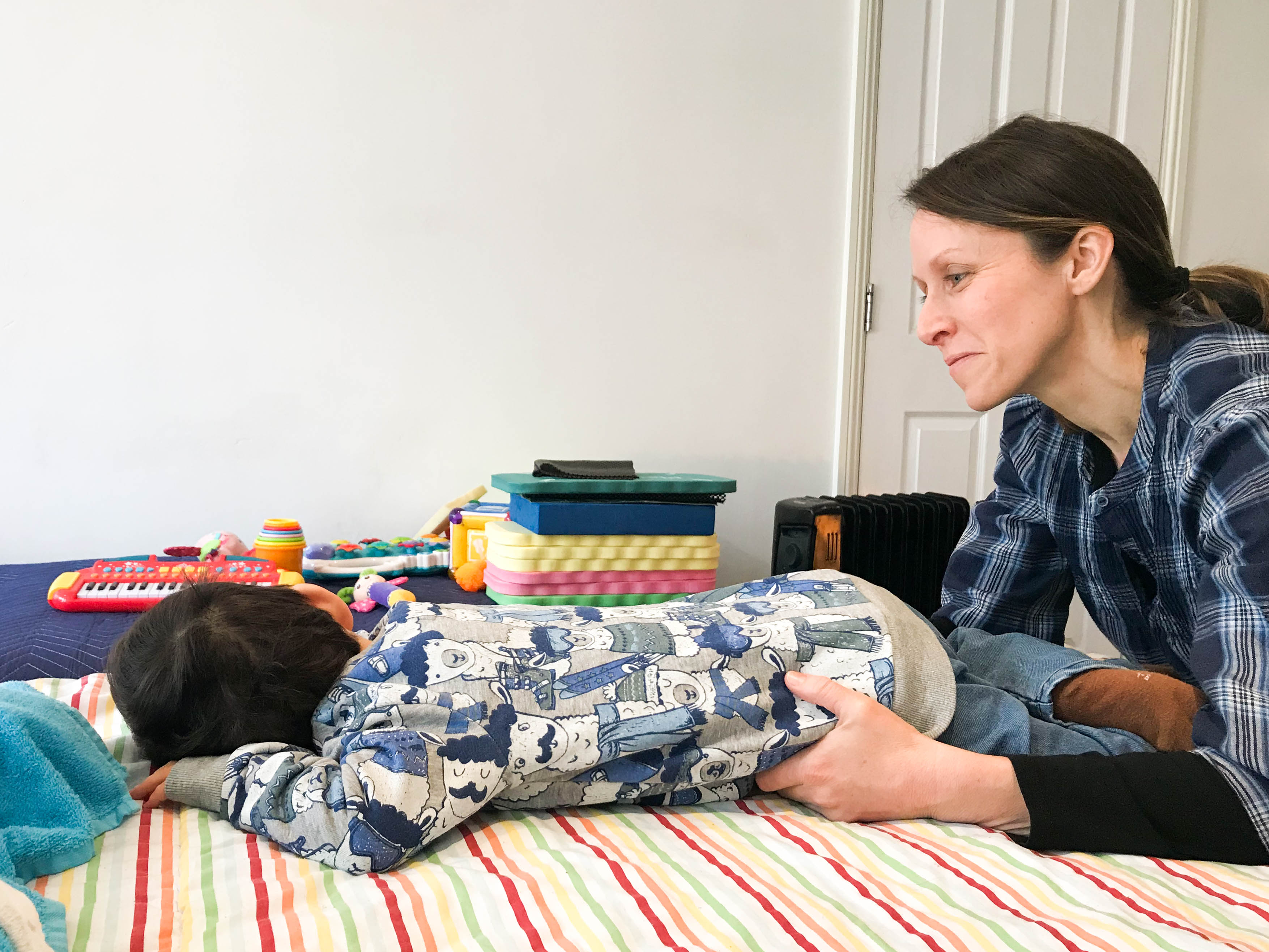
One of the new therapies we’ve tried recently is the Anat Baniel Method. It’s a lovely therapy that meets Mikaere where he is, that doesn’t force him to do anything, but builds on his current skill set.
It’s a bit like magic, to be honest. We went away with another special needs family down to the Isle of Wight where there is an amazing Anat Baniel therapist – Michelle Wheatley. She’s positively lovely. She also lives the special needs life, so she *gets it*. She also is able to interact with Kaikai with love and care and intention, which I appreciate.
So many of therapists force Mikaere through their intended programme without first taking stock of what kind of day he’s having. Michelle always starts with Mikaere. How he’s doing, what kind of day he’s having, what he’s interested in, the kind of movements he’s making. I love that. I love that it’s the kind of therapy that focuses purely on where he is right now.
I do want to say that while I trust the method, and I like Michelle a lot – I feel like a lot of ABM practitioners are about the money. I’d also even go as far and say for Anat Baniel herself, the leading lady is only about the glory and the dollar signs. That *frustrates* me so much, that there are so many practitioners who are taking advantage of special needs families. (Not all, mind. Michelle for example is affordable and a genuinely lovely person).
But we’ve seen gains with ABM. Mikaere rolling over, beginning to sit up, started tolerating tummy time, started being more intentional with a handful of movements he’d practiced with Michelle – it was pretty mind blowing .
It’s also a bit frustrating, because if we hadn’t seen gains I could have left that awful ABM culture where London appointments are £125+ for 45 minutes behind and focused on something else.
Still. We *have* seen gains. That’s what I’m holding on to. So we’ve been down a few times, driving down to the Isle of Wight for a week for an intensive. Its amazing being there. Its amazing for all of us, for our mental health and emotional wellbeing to be out of the constant therapy/appointment loop. Beach walks definitely help.
So ABM. I’d recommend it, but not at the ridiculous prices some practitioners charge. (If you’re in the UK, I would highly recommend Michelle. More information about her practice at www.brainbodysense.co.uk
